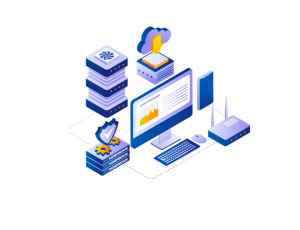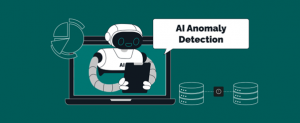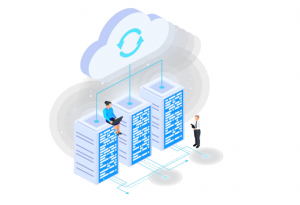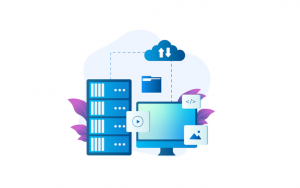

Think about this for a moment, how often do you interact with data in your daily life? From online shopping recommendations to banking apps, data is constantly moving behind the scenes, stored, retrieved, and optimized in massive databases. Now, imagine what happens when Artificial Intelligence (AI) and Machine Learning (ML) step into this already complex world of database management.
The truth is, we’re already seeing the beginnings of a revolution. Database management, once seen as a highly technical back-office function, is now entering an era where AI and ML are not just supporting tools — they’re becoming core drivers of efficiency, accuracy, and decision-making. So, what’s next for this powerful intersection? Let’s break it down together.

The Evolution of Database Management
To better understand AI and ML’s impact, it helps to first look at the broader evolution of database. Traditionally, databases were like giant digital filing cabinets. Information went in, you organized it carefully, and when you needed it, you fetched it. Over the years, we moved from simple flat-file systems to relational databases (think SQL) and then into more flexible NoSQL solutions designed to handle unstructured data like social media posts, videos, or IoT signals. But here’s the challenge, the sheer volume of data today is overwhelming. IDC predicts that by 2025, the world will generate more than 180 zettabytes of data. That’s not something humans alone can manage efficiently. Cue AI and ML.
Where AI and ML Fit into Database Management
AI and ML bring intelligence and automation into a traditionally rules-driven space. Instead of databases being purely reactive — waiting for queries or commands — they are now becoming self-optimizing, predictive, and adaptive. Here are some key areas where AI and ML are already making a difference:
Have you ever written a query that took forever to run? Or maybe your team struggled with database latency during peak traffic? AI can analyse query patterns, detect bottlenecks, and optimize execution plans in real time — all without human intervention. Imagine a database that says, “I noticed this query runs 200 times a day. Let me restructure the indexes for faster results.” That’s the power of AI-driven optimization.
Databases are treasure chests for cybercriminals. With AI, unusual access patterns or suspicious activities can be flagged instantly. ML algorithms can distinguish between normal user behaviour and potential breaches, adding an extra layer of security.
Instead of waiting for system failures or downtime, AI-powered systems can predict when your database might face performance issues. Think of it as health monitoring for databases. Just like a smartwatch alerts you about your heartbeat, AI can alert IT teams about slowing queries, overused resources, or possible breakdowns before they happen.

This might sound futuristic, but it’s already here in early forms. AI can detect a failure, reroute processes, or even apply fixes automatically — creating self-healing environments where downtime becomes a rarity.
Dirty data is the bane of analytics. Duplicate records, incomplete entries, or inconsistent formats can derail insights. ML can step in to clean, standardize, and even enrich data automatically. It’s like having a digital janitor who never sleeps.
Here’s where it gets even more exciting: AI doesn’t just keep databases running; it can use data patterns to offer recommendations. For instance, it might suggest how to partition data for better performance or which cloud storage plan matches your workload. It’s almost as if your database comes with an expert advisor built in.
Real-World Examples of AI and ML in Database Management
Let’s move from theory to practice. Big names in tech are already rolling out these capabilities:
These platforms are not just enhancing efficiency — they’re changing the role of database administrators (DBAs) entirely. Instead of spending hours tuning queries or handling patches, DBAs can now focus on strategic insights and architecture planning.

The Human Side: What Does This Mean for DBAs?
If you’re wondering, “Will AI take over database jobs?” — The truth lies somewhere in between. AI won’t eliminate the need for human expertise, but it will redefine it. Routine tasks like indexing, monitoring, or patching will increasingly be automated. However, humans will remain essential for:
Think of it this way, DBAs are evolving from mechanics to strategists in the database ecosystem. Instead of fighting fires daily, they’ll guide the long-term direction of how data supports business outcomes.
What’s Next? Future Trends in AI and ML for Databases
So, where do we go from here? Let’s explore the trends shaping the next phase:
We’ll soon see databases built from the ground up with AI at their core, rather than AI being layered on top. These systems will be inherently self-learning, adapting continuously to workloads, users, and security threats.
As AI makes more decisions about how data is stored or optimized, organizations will demand transparency. “Explainable AI” will allow teams to understand why a system made a certain change or recommendation.
Picture asking your database a question in plain English: “Show me last quarter’s sales by region.” Instead of writing SQL, you get answers directly. With AI-driven natural language processing (NLP), databases will become conversational assistants for business teams.
With the rise of IoT, data is being generated at the edge — think smart factories, autonomous vehicles, and healthcare devices. AI-powered databases will move closer to these sources, offering real-time analytics and decisions without waiting for centralized systems.
As regulations like GDPR and HIPAA tighten, ML can help by automatically classifying sensitive data, anonymizing it, and ensuring compliance. Instead of manual checks, databases themselves will enforce privacy rules intelligently.
Rather than replacing humans, the next phase will be about partnership. AI will provide recommendations, detect patterns, and automate the heavy lifting — while humans focus on context, creativity, and ethical oversight.
Challenges Ahead
Of course, this transformation isn’t without hurdles. Some challenges include:
Bias in Algorithms: If the data used to train ML models is biased, the outcomes will be tilted.
Cost of Transition: Shifting to AI-driven databases requires investment in infrastructure and skills.
Trust and Transparency: Not every organization is comfortable with databases making autonomous decisions.
Skill Gaps: DBAs and IT professionals need reskilling to thrive in this AI-powered landscape.
Data Governance Issues: With AI taking action on sensitive data, questions around ownership, accountability, and ethics will become more pressing.
But these challenges also represent opportunities for innovation, learning, and competitive advantage.

Case Study: How AI Transforms Retail Databases
To make this more tangible, let’s look at a real-world style scenario.
A global retail chain manages millions of transactions daily. Traditionally, their databases struggled during holiday seasons with high volumes of queries. By adopting an AI-driven database service:
The outcome will be fewer customer complaints, reduced fraud losses, and smoother operations during peak sales. This example shows how AI isn’t just about “tech efficiency” — it translates into better business outcomes and happier customers.
How Businesses Can Prepare Today
If you’re a business leader or IT decision-maker, here are steps you can take to stay ahead:

Final Thoughts
The future of database management is no longer about just “storing and retrieving” data. It’s about intelligence, adaptability, and foresight. With AI and ML, databases are evolving into active, self-aware systems capable of driving real business outcomes. For organizations, the key question is not whether AI and ML will shape the future of database management — they already are. The real question is, are you ready to embrace it?
At BriskWinIT Solutions, we help businesses stay ahead by delivering modern, AI-powered database services that are secure, scalable, and built for the future. Because the next generation of database management won’t wait — and with the right partner, you can harness it faster than you think.
Frequently Asked Questions (FAQs)
AI and ML are used to automate and optimize tasks such as query performance tuning, anomaly detection, predictive maintenance, and data cleaning. They make databases more efficient, secure, and adaptive without requiring constant manual intervention.
Not exactly. AI will handle repetitive tasks like indexing, patching, and monitoring. However, DBAs will remain essential for strategic planning, governance, compliance, and handling complex business-specific cases. In short, AI changes the role of DBAs rather than replacing them.
Some key benefits include:
Organizations may face challenges such as:
Yes — in fact, AI often makes databases more secure. Machine learning models can detect unusual access patterns or fraudulent activity faster than humans. However, organizations must still ensure proper governance and compliance to avoid risks.
Virtually every industry can benefit, but AI-driven databases are especially valuable in:
Start small by exploring AI features in existing platforms like Oracle Autonomous Database, Microsoft Azure SQL, or Google Cloud Spanner. Focus on improving data quality, invest in staff training, and gradually adopt more advanced automation. Partnering with experts like BriskWinIT Solutions can help ensure a smooth, future-ready transition.
Traditional databases rely heavily on manual configuration, tuning, and monitoring, while AI-powered databases use machine learning to automate these tasks. The latter can self-optimize, detect anomalies, and even predict issues before they occur.
Machine learning can automatically identify duplicate records, fill in missing values, and standardize inconsistent data formats. This reduces errors and ensures that analytics and business decisions are based on clean, reliable data.
NLP will allow users to query databases in plain English (or other natural languages) instead of writing complex SQL statements. For example, a user could type, “Show me the top 10 customers by sales last year,” and the database would generate results instantly — making data access more inclusive across teams.
Join the conversation and let us know your perspective!
AI and Machine Learning are reshaping database management faster than ever — but what do you think? Are these advancements exciting, challenging, or maybe a bit of both for your organization?
Explore more insights in our blogs, and don’t forget to share your thoughts, questions, or even your own experiences in the comments. Your perspective could spark the next great conversation in the data community!